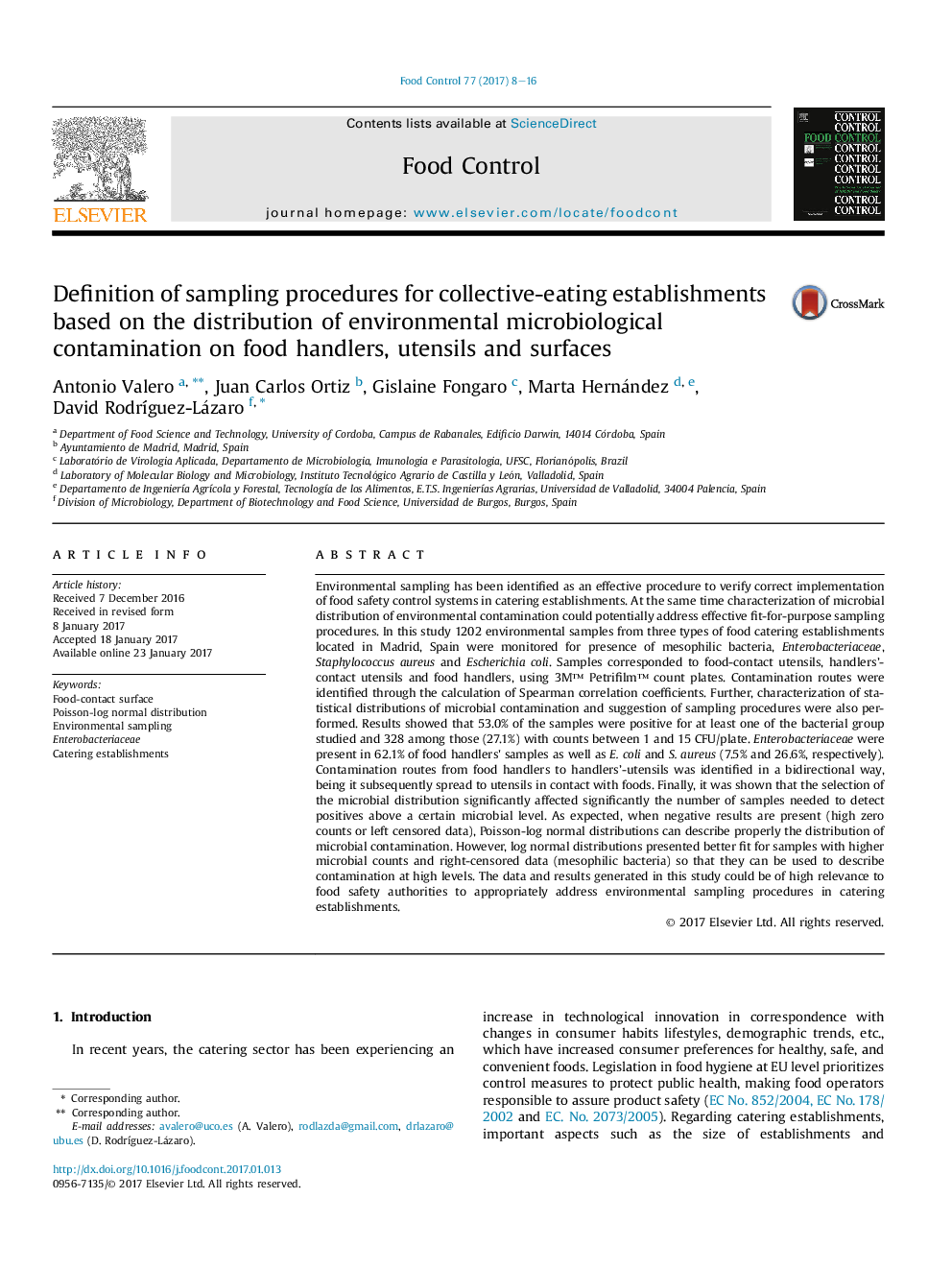| کد مقاله | کد نشریه | سال انتشار | مقاله انگلیسی | نسخه تمام متن |
|---|---|---|---|---|
| 5767545 | 1628387 | 2017 | 9 صفحه PDF | دانلود رایگان |
- Microbial environmental monitoring of mass catering establishments was assessed.
- Enterobacteriaceae could potentially serve as indicators of microbial contamination.
- Poisson-log normal distribution could better describe contamination at low levels.
- Contamination routes between food handlers and surfaces were identified.
- Environmental sampling procedures could be implemented in mass catering.
Environmental sampling has been identified as an effective procedure to verify correct implementation of food safety control systems in catering establishments. At the same time characterization of microbial distribution of environmental contamination could potentially address effective fit-for-purpose sampling procedures. In this study 1202 environmental samples from three types of food catering establishments located in Madrid, Spain were monitored for presence of mesophilic bacteria, Enterobacteriaceae, Staphylococcus aureus and Escherichia coli. Samples corresponded to food-contact utensils, handlers'-contact utensils and food handlers, using 3M⢠Petrifilm⢠count plates. Contamination routes were identified through the calculation of Spearman correlation coefficients. Further, characterization of statistical distributions of microbial contamination and suggestion of sampling procedures were also performed. Results showed that 53.0% of the samples were positive for at least one of the bacterial group studied and 328 among those (27.1%) with counts between 1 and 15 CFU/plate. Enterobacteriaceae were present in 62.1% of food handlers' samples as well as E. coli and S. aureus (7.5% and 26.6%, respectively). Contamination routes from food handlers to handlers'-utensils was identified in a bidirectional way, being it subsequently spread to utensils in contact with foods. Finally, it was shown that the selection of the microbial distribution significantly affected significantly the number of samples needed to detect positives above a certain microbial level. As expected, when negative results are present (high zero counts or left censored data), Poisson-log normal distributions can describe properly the distribution of microbial contamination. However, log normal distributions presented better fit for samples with higher microbial counts and right-censored data (mesophilic bacteria) so that they can be used to describe contamination at high levels. The data and results generated in this study could be of high relevance to food safety authorities to appropriately address environmental sampling procedures in catering establishments.
Journal: Food Control - Volume 77, July 2017, Pages 8-16
